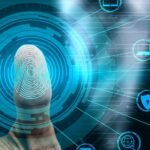In the ever-evolving digital security landscape, quantum encryption has emerged as a groundbreaking technology that promises unbreakable security for sensitive data. Unlike traditional encryption methods, which rely on complex mathematical algorithms, quantum encryption leverages the principles of quantum mechanics to safeguard information.
Guide to Ensuring Unbreakable Security
This article will explain how quantum encryption ensures unbreakable security, paving the way for secure communication and data protection in the quantum era.
Understanding Quantum Encryption
Quantum encryption, often called quantum key distribution (QKD), is a form of encryption that uses the principles of quantum mechanics to secure data. It is based on the idea that quantum particles, such as photons, can exist in multiple states simultaneously, a phenomenon known as superposition. This property forms the foundation of quantum encryption’s security.
Quantum Entanglement
One of the cornerstones of quantum encryption is a phenomenon called quantum entanglement. When two particles become entangled, their properties become interdependent, regardless of the distance that separates them. Any change to one particle instantaneously affects the other, even if they are light-years apart. This property is exploited to create secure communication channels.
Quantum Key Distribution (QKD)
Quantum key distribution is the core process in quantum encryption. It involves the exchange of quantum particles (usually photons) between a sender and a receiver. These particles carry quantum states that generate a shared secret key between the two parties.
Uncertainty Principle
It capitalizes on the Heisenberg Uncertainty Principle, which states that certain physical properties (like position and momentum) cannot be simultaneously measured with arbitrary precision. In the context of quantum encryption, attempting to intercept or measure quantum states introduces errors that the sender and receiver can detect.
Detection of Eavesdropping
A critical feature of quantum encryption is its ability to detect eavesdropping attempts. When an unauthorized party attempts to intercept quantum particles to gain information about the secret key, they disturb the particles’ quantum states. This disturbance is detectable, alerting the sender and receiver to potential eavesdropping.
Quantum Key Distribution Protocols
Various quantum key distribution protocols, such as the BB84 protocol, E91 protocol, and others, have been developed to facilitate secure key exchange. These protocols use quantum properties like superposition and entanglement to ensure the shared key remains secure from eavesdropping attempts.
Unbreakable Encryption
The security of quantum encryption lies in the fundamental principles of quantum mechanics. Any attempt to intercept or measure quantum states will inevitably alter those states, making eavesdropping detectable. This property ensures that the shared key remains secure, providing unbreakable encryption.
Quantum-Safe Cryptography
Quantum computing poses a potential threat to traditional encryption methods, as quantum computers have the potential to break many encryption algorithms currently in use. However, it is quantum-safe, meaning it is resistant to attacks by quantum computers. It is a crucial technology for securing data in the post-quantum computing era.
Practical Applications
It is not just a theoretical concept; it has practical applications. It is used to secure communication in finance, healthcare, and government. For example, it can safeguard financial transactions, protect sensitive medical data, and ensure the confidentiality of government communications.
Quantum Key Distribution Networks
Countries and organizations are actively developing quantum key distribution networks, such as the China-Austria QKD network and the European Quantum Communication Infrastructure (EuroQCI). These networks use quantum encryption to create secure communication channels over long distances, enabling secure global communication.
Research and Development
It is an area of ongoing research and development. Scientists and engineers continually work to improve quantum encryption systems’ efficiency, range, and practicality. This research is vital to making it more accessible and widely applicable.
Future Prospects
As quantum technology advances, the prospects for quantum encryption are promising. Developing practical systems for everyday use is on the horizon, ensuring that unbreakable security will be a reality for individuals and organizations worldwide.
Conclusion
Quantum encryption represents a paradigm shift in the field of digital security. By harnessing the peculiar properties of quantum mechanics, it offers unbreakable security for data and communication. As quantum technology matures, it will safeguard sensitive information in an increasingly interconnected digital world. Understanding the principles and steps of quantum encryption is essential for grasping its potential and significance in cybersecurity.












